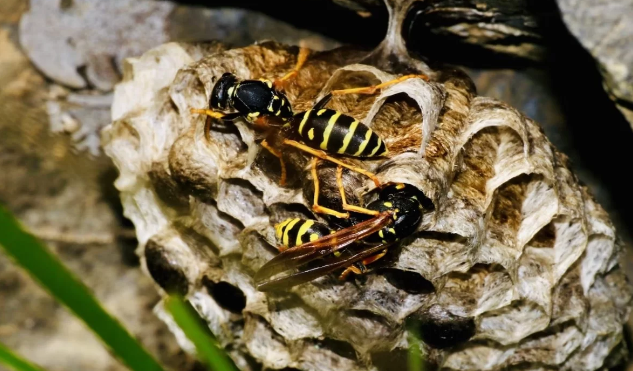
The Significance of Bees and Wasps in the Ecosystem
Wasps and bees are essential for both pest management and pollination. In particular, bees are in charge of pollinating many crops, providing us with sustenance. They help ensure the reproduction of plants by transferring pollen from the male structures of flowers to the female structures. On the other hand, wasps may not be as beloved, but they are excellent predators, helping control pest populations. Understanding their importance can help us better manage their populations without resorting to harmful measures. According to National Geographic, these insects are essential for maintaining biodiversity. Therefore, it’s necessary to use non-lethal methods to protect both the insects and their habitat.
Identifying Wasp and Bee Species in Your Area
Identifying the species of bees or wasps you’re dealing with is crucial for adopting the most effective management techniques. Different species exhibit varying behaviors and nesting habits, influencing the control methods. For instance, honeybees typically form large, permanent colonies and are highly social, while solitary bees might nest individually in the ground. Wasps also vary significantly; paper wasps build exposed nests, while yellowjackets often create nests underground. Ensuring accurate identification can lead to more effective and humane control strategies, especially for tasks like wasp nest removal. For detailed information on various species and their characteristics, resources like BBC Newsround can be helpful.
Non-Lethal Methods to Deter Wasps and Bees
Using Natural Repellents
Bees and wasps can be discouraged from building their nests near your house using natural repellents like peppermint oil. Peppermint oil has a strong smell that these insects find unpleasant. Apply the oil around areas where you’ve observed activity. Another option is to make a spray by combining water and peppermint oil, then misting it on trouble spots. The pungent smell will discourage them from returning, allowing you to manage their populations without resorting to harmful measures.
Installing Physical Barriers
Physical barriers like screens and nets can prevent wasps and bees from entering your living spaces. These barriers benefit areas like patios and balconies, where these insects will likely hover. You can keep your house insect-free by installing fine mesh screens on windows and vents while allowing ventilation. Nets can also cover outdoor dining areas or pools, protecting the insects without harming them.
Maintaining Cleanliness
Keeping your environment clean is fundamental in managing wasp and bee populations. Food scraps, sugary substances, and garbage can attract these insects, so it’s crucial to dispose of them properly. Clean up spills immediately and keep food covered when eating outside. Also, regularly cleaning trash bins and recycling containers can make your home less inviting to wasps and bees. Reducing attractants can minimize the likelihood of these insects residing near your home.
Creating a Bee-Friendly Garden While Managing Wasps
Creating a garden that attracts bees while keeping wasps at bay is possible. Planting flowers such as lavender, sunflowers, and marigolds can attract bees due to their bright colors and nectar-rich blooms. These plants beautify your garden and support bee populations, vital for pollination. Creating a water source specifically for bees, such as a shallow dish with pebbles, can encourage them to frequent your garden without attracting wasps. Additionally, placing these plants away from high-traffic areas can help manage interactions with wasps.
DIY Tricks to Handle Wasp and Bee Nests
Simple home remedies can be effective when dealing with nests. These insects can be discouraged by immediately spraying a mixture of soap and water upon a nest. The insects become dehydrated due to the soap dissolving their outer layer of protection. However, this method should be done in the early morning or late evening when bees and wasps are less active. This reduces the risk of stings and makes the insects more straightforward to manage. Avoid abrupt movements and always wear protective clothes to avoid inciting an aggressive reaction.
When to Call Professional Help
Sometimes, a wasp or bee situation may escalate to a point where professional pest control services are necessary. This is especially true if you or your family are allergic to stings or the nest is in a hard-to-reach location. If you notice any insects or are unsure how to handle the situation safely, calling in professionals is the best course of action. Expert services have the equipment and knowledge necessary to remove nests securely and efficiently. They can also guide you on how to stop future infestations, ensuring long-term control. For those concerned with humane methods, there are ethical ways to remove wasp nests that professionals can employ.
Educating Your Community
Raising community awareness of the value of bees and wasps and advising on safe wasp and bee management techniques can significantly influence the situation. Organizing educational workshops or community events can be a great way to disseminate this information. Taking the initiative can result in a more peaceful cohabitation with these essential insects. Educating your community helps build a collective understanding and fosters strategies for managing wasp and bee populations without causing harm, benefiting both humans and insects alike
